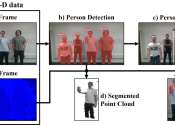A statistical model is a set of mathematical equations which describe the behavior of an object of study in terms of random variables and their associated probability distributions. If the model has only one equation it is called a single-equation model, whereas if it has more than one equation, it is known as a multiple-equation model.
In mathematical terms, a statistical model is frequently thought of as a pair (Y,P) where Y is the set of possible observations and P the set of possible probability distributions on Y. It is assumed that there is a distinct element of P which generates the observed data. Statistical inference enables us to make statements about which element(s) of this set are likely to be the true one.
Three notions are sufficient to describe all statistical models.
One of the most basic models is the simple linear regression model which assumes a relationship between two random variables Y and X. For instance, one may want to linearly explain child mortality in a given country by its GDP. This is a statistical model because the relationship need not to be perfect and the model includes a disturbance term which accounts for other effects on child mortality other than GDP.
As a second example, Bayes theorem in its raw form may be intractable, but assuming a general model H allows it to become
which may be easier. Models can also be compared using measures such as Bayes factors or mean square error.









